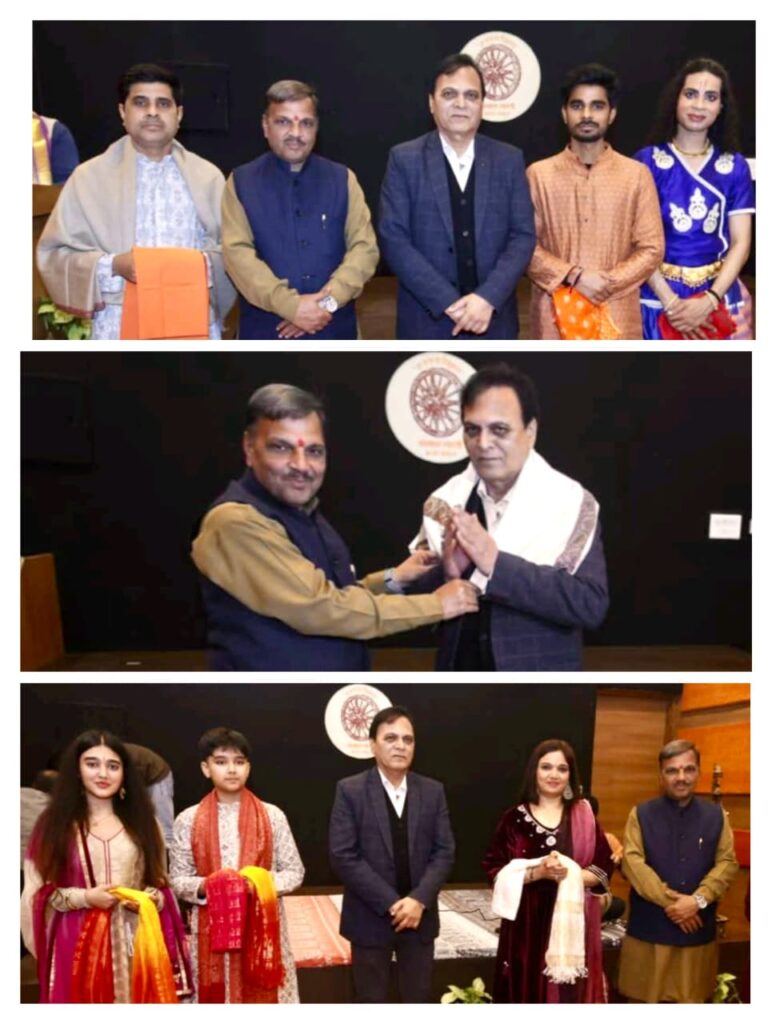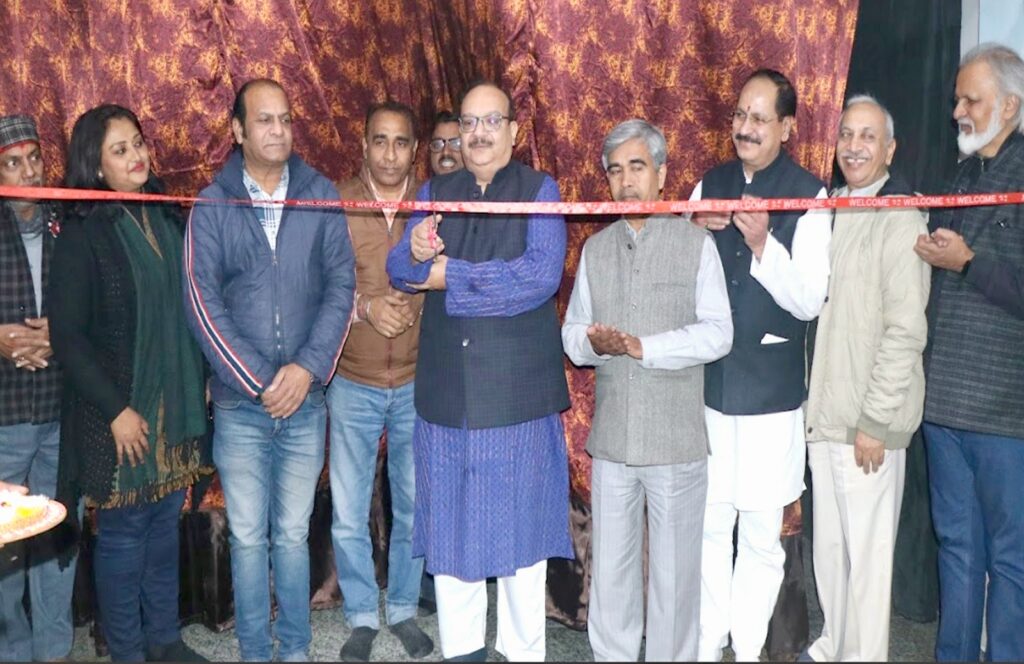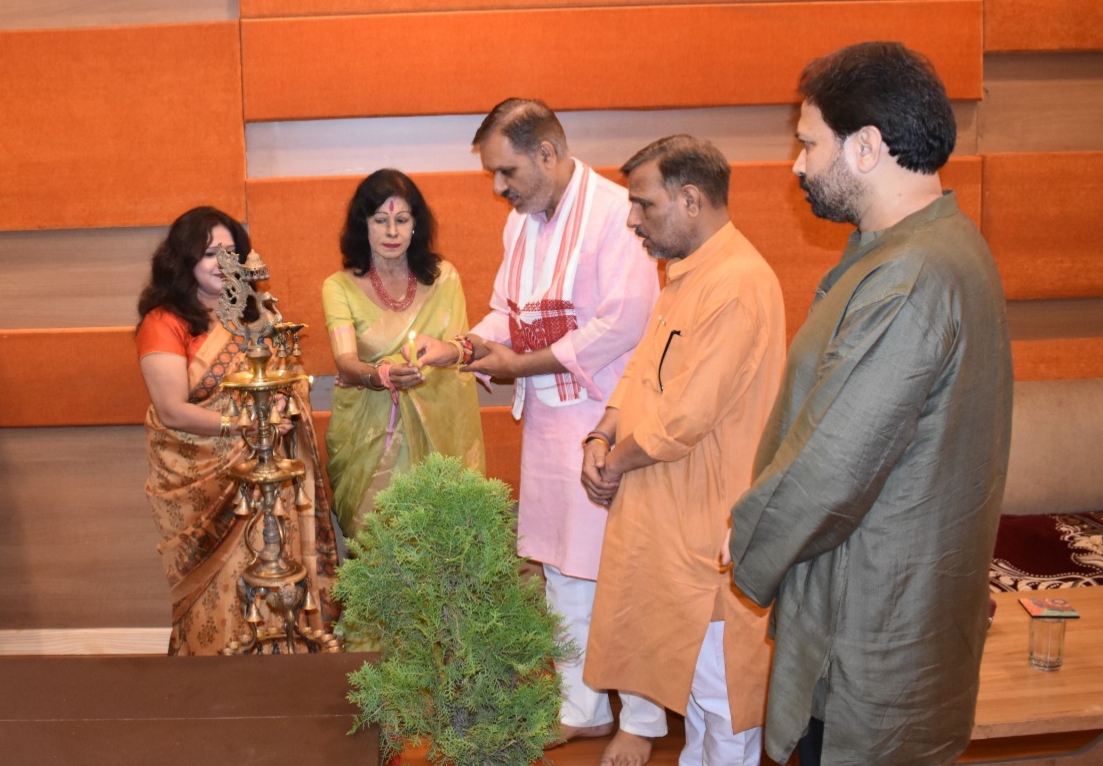Kala Sankul Hosts Engaging Symposium on Indian Art and the Role of CCRT

New Delhi.
The central office “Kala Sankul” of Sanskar Bharati hosted a meaningful symposium that brought together artistic perspectives, creative expression and cultural dialogue under one roof. The event marked three successful years of the Kala Symposium Series, making the gathering a moment of both reflection and renewal.
The program commenced with a traditional lamp-lighting ceremony performed by the Chief Guest Dr. Vinod Narayan Indurkar (Chairman, CCRT), Symposium Convener Shruti Sinha, Co-convener Vishwadeep Ji, Program Coordinators Sakshi Sharma and Sneha Mukherjee.
With the theme “The Role of CCRT in the World of Art from an Indian Perspective,”
Dr. Indurkar delivered the keynote address. He emphasized that:
“Indian art is not merely an act of expression — it is a worldview, a way of life. Our responsibility is to carry this consciousness forward to the next generation through structured institutional efforts.”
He highlighted CCRT’s contribution in preserving India’s folk and classical traditions, supporting artists, and strengthening cultural awareness at the national level. His address offered a deep insight into how policy, pedagogy and cultural values interconnect in shaping India’s artistic future.
Artistic Presentations Enrich the Dialogue
The symposium was further elevated by soulful performances.
Ujra Akshara, Prof. (Dr.) Rachna and Sadhit Kaushal presented musical renditions that echoed the cultural spirit of India. Aparna Sarathe and Aman Pandey expressed philosophical ideas through Kathak, transforming thought into movement and emotion.
These artistic offerings ensured that the gathering was not only intellectually stimulating but also emotionally resonant.
A Gathering of Artists, Scholars and Young Voices
The event witnessed enthusiastic participation from artists, cultural practitioners, scholars, students and young art enthusiasts.
The symposium concluded with a shared resolve to revitalize cultural awareness and sustain the continuity of Indian artistic heritage.
Organizing Team and Contributors
The successful execution of the monthly symposium was supported by:
Harshit Goyal, Sneha Mukherjee, Garima Rani, Pradeep Pathak, Priyanka, Nidhi Tiwari, Deepti, Brijesh Kumar, Vijender Kumar, Sushank and Mrityunjay Ji.
Kuldeep Sharma skillfully conducted the proceedings.
Kala Sankul’s Commitment
Kala Sankul reaffirmed its mission:
“This platform will continue to recognize and encourage artists and institutions that bring forward the sensitive, meaningful and socially relevant questions of art, culture and the nation with a constructive and courageous vision.”










